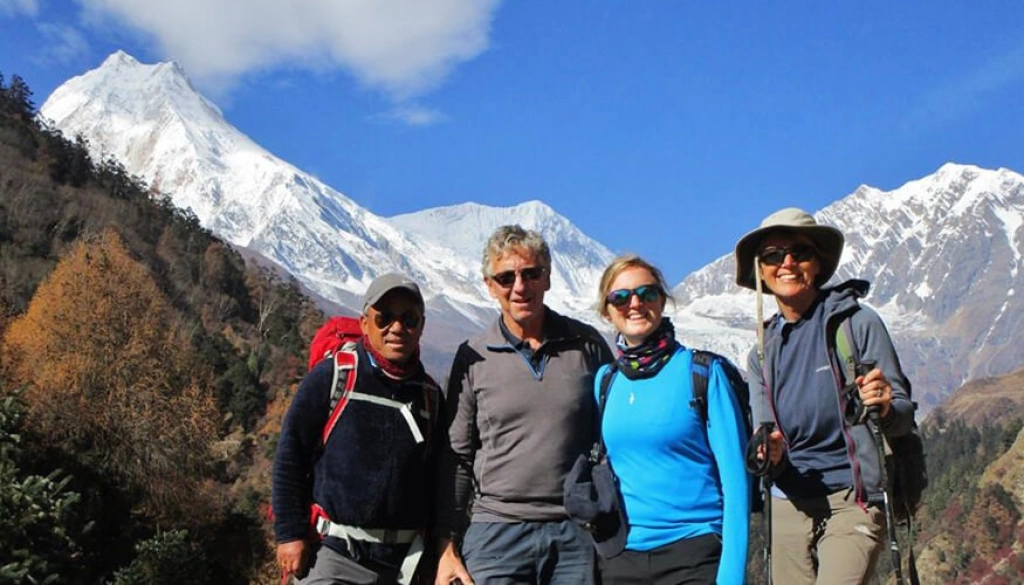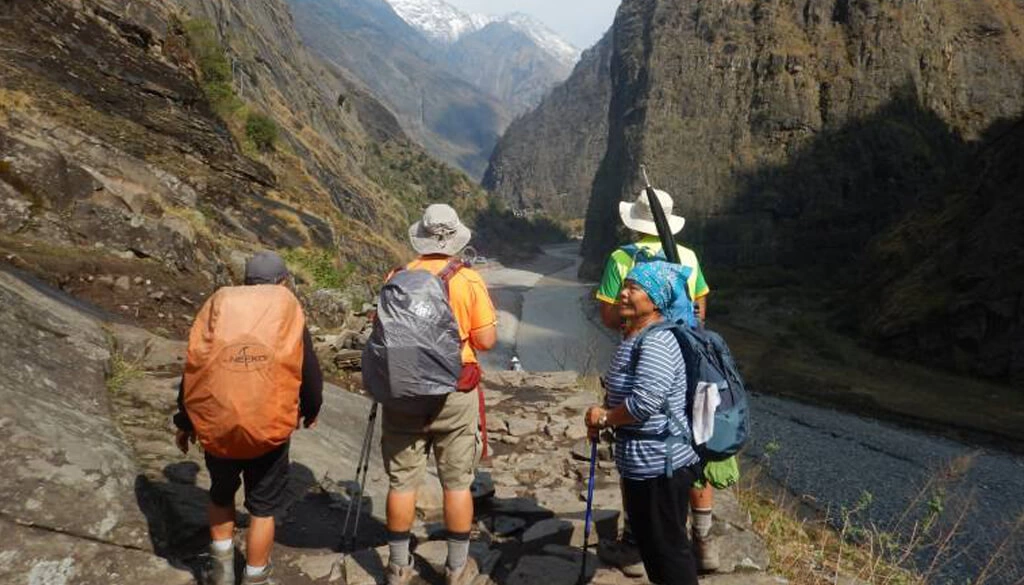Departure Note:
Guaranteed - We already have trekkers booked for those dates and you can join the group.
Available - The date is available to book and once you confirm your trip it will be guaranteed.
Limited - The departure date is filling fast and only limited seats are available to join.
Closed- The Trip cannot be booked on that specific date. Contact us for customized dates.
The departure dates are your arrival dates in Nepal.
We have set dates for departure to the Amazing Manaslu and Tsum ValleyTrekking. So, pick your preferable date and let the adventure begin.
Manaslu and Tsum Valley Trekking is available and can be done throughout the year. So, if the date you prefer is not listed on our departure dates then you can contact us directly to book the trip on your own desired date.
We have listed the price up to 12 trekkers at maximum. If you are more than 12 trekkers, then please feel free to contact us for amazing discounted group price and further booking process.
Private Trips to Manaslu and Tsum Valley is possible on any date of the year. Contact us to design your own private trips with you loved ones.
Useful Info
The Tsum Valley, located east of Philim near the Tibetan border is as isolated and untouched as any in Nepal, first opened to foreign trekkers in 2008, home to a small indigenous group known as Tsumbas, and surrounded by mountains that include Himalchuli to the west and the Ganesh Himal to the south.
Why do the Manaslu and Tsum Valley Trekking with Annapurna Foothills Treks?
When trekking into extremely remote regions, it is important to have trek with an experienced company. Annapurna Foothills Treks has been running trekking and climbing expeditions for over 10 years. Annapurna Foothills Treks reaches for the highest standard of ethical business practices.
The Best Time of Year for the Manaslu and Tsum Valley Trekking :
The best seasons for Manaslu Circuit and Tsum Valley trekking are Spring (February to late April) and Autumn (late September to late November).
Temperatures on the Manaslu and Tsum Valley Trekking:
The temperatures at night will drop to around 5 C, and during the day will climb to around 25 C. At higher altitudes temperatures range from about 15 C to 20 C. You should be prepared with proper protection from the sun as well as layers of clothing that can be added or taken off easily.
Manaslu and Tsum Valley Accommodation:
In Kathmandu, our clients enjoy four nights in Hotel Shakti or Hotel Norbu Linka before and after heading into the remote regions. Accommodation is included in the cost of your package and Annapurna Foothills Treks takes great care to arrange the most comfortable accommodation possible throughout your stay.
On the Manaslu Circuit there are simple but cozy tea houses. Although it some companies run camping trips, the guesthouses are appreciative of your business, and their warm welcome will certainly be a special part of you trip. The Tsum Valley does not recieve enough visitors to warrant guest houses, but 'home stays' are available, and again, a great way to experience the rich culture of the Tsumba's.
Drinking Water on the Manaslu and Tsum ValleyTrekking:
You will be provided with boiled water during the trek. While trekking, it is important to keep hydrated; you should drink at least 3 liters of water each day. As additional precaution, we suggest you bring a supply of water purification tablets to add to the water.
Fitness/Health on the Manaslu and Tsum Valley Trekking:
The altitude becomes more noticeable the higher we go, so we walk at a slow pace and take plenty of breaks to rest and acclimatize. Our itinerary is planned to allow rational acclimatization and avoid altitude sickness. Please read Altitude Advice.
Safety:
When travelling in remote mountain regions, uncertainties such as weather, health problems and natural disasters require a certain amount of flexibility. While our goal is to follow the itinerary, that is not our first priority;your safety is always our first priority. Annapurna Foothills Treks and Expeditions request your cooperation to accept the decisions and advice of our trusted and experienced guides if they deem it necessary to change or cancel any part of the itinerary due to safety concerns.
Environmental Responsibility:
Annapurna Foothills Treks practices and teaches the Leave-No-Trace principles. Moreover, we are committed to protecting the land and culture of the indigenous people. The mountains are our home and we are unwilling to sacrifice their preservation for human objectives.Annapurna Foothills Treks believe that given the proper information most people will do all they can to help protect and maintain the environment.
Travel Insurance:
It is strongly recommended to be sufficiently protected when you go into remote areas. You need specialized travel insurance that covers emergency evacuation, injury, lost baggage, liability and medical treatment. Make sure the insurance covers all the activities that you will be undertaking during your stay in Nepal. Annapurna Foothills Treks and Expeditions Pvt. Ltd. can organize the appropriate medical response based on your policy.
Annapurna foothills Treks has an agreement in Kathmandu that guarantees payment for helicopter evacuations. We will pay a cash deposit to the helicopter operator and collect the money from you once you have been rescued. Before leaving on the expedition, we will make sure your policy specifically covers mountaineering or alpinism otherwise you may have a difficult time settling the large claim.














